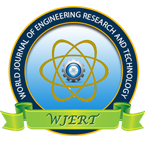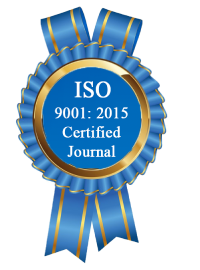| All | Since 2020 | |
| Citation | 172 | 110 |
| h-index | 7 | 5 |
| i10-index | 1 | 0 |
WJERT Citation 
Login
News & Updation
Abstract
HEAVY METAL CONTAMINATION OF CAMELS’ MILK FROM MAIDUGURI AND ITS ENVIRONS, NIGERIA
Garba S. T.*, Jatau A. M. and Abdullahi S.
ABSTRACT
The safety of food items is referring to safety of its consumers. In this research work, the concentration of the metals; Co, Cu, Cr, Cd, Ni, Zn and Pb in raw camels? milk sample from Maiduguri and its environs were determined. Fresh raw camels? milk samples were collected from lactating she-camels of different age groups that were freely ranging. Collection was done in two phases, first three, six and nine-months period of calving. A total number of 50 milk samples were collected, all of which were collected during the dry season. Sample collected was analyzed using atomic absorption spectrophotometer (Shimatdzu Model AA 6200) after treatment with 5 mL of 10% HCl. The results of this study, indicate that, the concentration of Cd ranged from 0.014 ? 0.019 ?g/g with the highest level observed at the six-month period of lactation. The concentration of Pb ranged from 0.013 - 0.014 ?g/g, with the highest concentration observed at the nine-month period of lactation. For Ni the level ranged from 0.014 ? 0.035 ?g/g, the highest concentration was observed at the nine-month period of lactation. Zn concentration ranged from 0.325 ? 0.373 ?g/g, the highest level of 0.372 ?g/g was observed at the nine-months period of lactation., The concentration of Cu ranged from 0.150 ? 0.471 ?g/g. Cr ranged from 0 - 0.115 ?g/g, the metal was found below detection limit at the three-months period of lactation and gradually increases to 0.471 ?g/g at the nine-month period of lactation. The level of Co ranged from 0.131 ? 0.231 ?g/g, the highest level of 0.231 ?g/g was observed at the first three-month period of lactation. Contamination is very minimal for the absence of high anthropogenic activity (industries or high level of traffication). Cobalt, Cr, Cu, Ni, and Zn, were found to increase with increase in the lactation period. This suggest that, the more the lactating mother gain energy to thrive and feed well, the more the level of the metals in the milk. with the exception of Cd, the metals determined in this study were all found below the maximum acceptable limits. This suggest that, camels? milk from Maiduguri and its environs are safe to take. It also indicates that, the environment is equally less or not polluted by the metals. No significant difference between the different lactation period at P = 0.05.
[Full Text Article] [Download Certificate]
